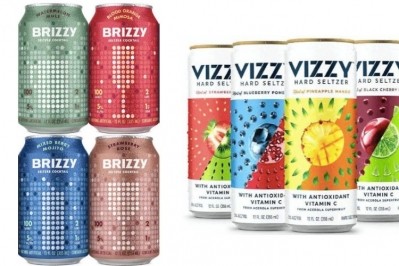US consumers shop local for cider, as regional brands grab 40% market share

The global cider market is 10 times bigger today than it was 10 years ago. Regional and local ciders sales have jumped up 15% in the last year, according to Nielsen data, with their market share now close to 40% in off-premise sales.
These were some of the insights revealed at the 10th annual CiderCon event in Oakland, California last month, which was the first put on since the United States Association of Cider Makers (USACM) rebranded to the American Cider Association (ACA).
The event was held in the Bay Area January 28-31, and brought together more than 1,000 attendees. It was the largest CiderCon to date, including international makers and featured styles like keeved cider and dessert cider.
Paul Vander Heide, president of ACA
“Cider makers will experience challenges in the year ahead. We face head-winds from growth in adjacent categories. While challenging times can push us to think we are competing with our fellow cider makers, working together will be more important than ever in 2020.”
More than a one-note
Regional and local ciders now account for nearly half of on-premise sales in the US, and many of the smaller, popular brands are experiencing double digit growth. However, in 2019 the cider industry faced serious competition from flavored malt beverages (FMBs), and hard seltzers in particular.
"At first it was a little scary because people set aside a certain percentage of their shelf space for non-beer in the beer case, and that’s where they’ve been putting cider. So if you put more things in the non-beer category, it squeezes the space for cider potentially," Michelle McGrath, executive director of the ACA, told BeverageDaily.
Consumers are turning to flavored sparkling beverages for many reasons, but in particular with the perception that they are healthier than other alcoholic drinks. The ACA is combating this narrative by being more explicit about the fact that cider is a natural product that often has 0g of sugar.
It is not always sweet, and the ACA's Dry Cider January campaign was the first testing ground for that messaging. The campaign has been well-received in member cideries, said McGrath: adding that there is now a directory on the ACA website that helps consumers find local ciders with 0g of residual sugar.
Into 2020, the ACA board is working to convey that the diversity of cider is incredibly important.
"When people find a cider they don’t like, they need to come back to the category and try a different style, like they do with beer, wine and spirits. So that’s something we’re really trying to hammer home, that cider is not one note. It’s not one beverage, it’s an entire category," she said.
A big first legislative step
CiderCon 2020 also marked a time for celebration, thanks to the renewal of the Craft Beverage Modernization and Tax Reform Act. It ensured that cider makers would avoid a tax hike for at least another year. ACA sent three comment letters and dozens of letters from members to the TTB, in support of fair, commonsense regulations for cider.
McGrath noted there was a definite sense of coming together and embracing each other among the makers at CiderCon this year thanks to the tax battle, despite differences and distinct business model approaches.
In 2019, the ACA held 21 meetings with Congress in its efforts to build political power for the cider industry. This included giving Congressman Richard Neal a tour of Massachusetts’ Headwater Cider.
There was broad grassroots support of the tax reform act within cider, and the ACA collaborated with other alcohol categories to fight for its passage.
"It’s definitely not a perfect solution for the cider industry but it’s a really big start. I think our members are getting a more evolved understanding of how the legislative process works, so they’re on board for the long game," McGrath said.
Doing what cider does best
Moving forward, the ACA has pledged to continue to protect the interests of cideries at a federal level. It also will provide cideries with more consumer-targeted marketing efforts, more tools for navigating compliance and state regulations and more education for members. It will also build relationships with the food and beverage industry for the benefit of increasing cider knowledge and beyond.
For example, the ACA partnered with the Cider Institute of North America (CINA) during CiderCon 2020. The two organizations co-developed a large production-oriented and technical workshop track with 11 sessions on topics from developing an in-house sensory evaluation program to aging ciders.
CINA is a non-profit that partners with universities and other institutions to train cider makers with educational programming. Founded four years ago out of CiderCon 2016, CINA evolved specifically to teach cider production skills.
McGrath expects continued evolution of what the conference offers, as well as the ACA itself, based on member feedback and collaboration. The ACA sees CiderCon as an opportunity to connect with cideries and makers of every size, and to support the category through its challenges.
"I was a little concerned going into CiderCon that there might have been a general depressed mood because of the existential threat of the 200% growth for hard seltzer, but it was the opposite. People were so excited to get out there and do what cider does best," McGrath said.
This year, CiderCon coincided with the first annual Bay Area Cider Week. More than 50 cider-based entertainment and education events took place across the region between January 26 - February 2. The next CiderCon will take place in Chicago from February 2-5, 2021.



















